WISDOM OF THE KADAM MASTERS

Wisdom Publications, Inc.
199 Elm Street
Somerville, MA 02144 USA
www.wisdompubs.org
2013 Institute of Tibetan Classics
All rights reserved.
No part of this book may be reproduced in any form or by any means, electronic or mechanical, including photography, recording, or by any information storage or retrieval system or technologies now known or later developed, without permission in writing from the publisher.
Library of Congress Cataloging-in-Publication Data
Wisdom of the Kadam masters / translated, edited, and introduced by Thupten Jinpa.
pages cm. (Tibetan classics)
Includes bibliographical references and index.
ISBN 1-61429-054-7 (pbk. : alk. paper)
1. Bka-gdams-pa (Sect)Doctrines. I. Thupten Jinpa, translator, editor of compilation, writer of added commentary.
BQ7670.4W57 2013
294.34432dc23
2012044496
ISBN 978-1-61429-054-4
eBook ISBN 978-1-61429-065-0
17 16 15 14 13
5 4 3 2 1
Cover design by Phil Pascuzzo. Interior design by Gopa&Ted2, Inc. Set in Diacritical Garamond Pro 10.7/12.7. Cover image is Two Kadam Masters with Their Lineages, 12th Century. (From an anonymous collection.)
Wisdom Publications books are printed on acid-free paper and meet the guidelines for permanence and durability of the Production Guidelines for Book Longevity of the Council on Library Resources.
Printed in the United States of America.
 This book was produced with environmental mindfulness. We have elected to print this title on 30% PCW recycled paper. As a result, we have saved the following resources: 12 trees, 5 million BTUs of energy, 870 lbs. of greenhouse gases, 5,264 gallons of water, and 353 lbs. of solid waste. For more information, please visit our website, www.wisdompubs.org. This paper is also FSC certified. For more information, please visit www.fscus.org.
This book was produced with environmental mindfulness. We have elected to print this title on 30% PCW recycled paper. As a result, we have saved the following resources: 12 trees, 5 million BTUs of energy, 870 lbs. of greenhouse gases, 5,264 gallons of water, and 353 lbs. of solid waste. For more information, please visit our website, www.wisdompubs.org. This paper is also FSC certified. For more information, please visit www.fscus.org.
Publishers Acknowledgment
THE PUBLISHER gratefully acknowledges the generous help of the Hershey Family Foundation in sponsoring the publication of this book.
Contents
WISDOM OF THE KADAM MASTERS is the second volume in the new series Tibetan Classics, which aims to make available accessible paperback editions of key Tibetan Buddhist works in English translation. The main selection in this volume is the much-loved twelfth-century work known as Sayings of the Kadam Masters. That these celebrated sayings continue to resonate powerfully for those on the spiritual path nearly a millennium after their utterance shows that they capture something profound about our yearning. The next three selections in this special anthology, chapters from the Father Teachings of the Book of Kadam, present lively exchanges between the Indian master Atia and his Tibetan heir, Dromtnpa. The final selection is a chapter from the Son Teachings of the Book of Kadam, an entertaining tale of one of Master Droms previous lives.
These selections, so revered in the Tibetan tradition, have been drawn from the larger hardcover volume entitled The Book of Kadam: The Core Texts, which I had the privilege to translate into English for The Library of Tibetan Classics. In this volume, however, I have expanded the contextualizing materials for the general reader. These include a general introduction, explanations specific to each of the three sections, biographical notes on the authors whose sayings are featured in the volume, as well as an explanatory glossary. Together, these materials provide historical and cultural context as well as an overview of the central themes of the individual texts, allowing the reader to engage with the words in a more meaningful way.
I would like to express my deep gratitude, first and foremost, to my two spiritual teachers, His Holiness the Dalai Lama and the late Kyabj Zem Rinpoch, both of whom helped bring the teachings of the Kadam masters to life for me. My heartfelt thanks go to Barry Hershey, Connie Hershey, and the Hershey Family Foundation, whose support made it possible for me to translate the larger volume from which the texts selected here were drawn. I must also thank Pierre and Pamela Omidyar, who through a special grant enabled me to develop this particular volume for general readers.
Let me also take this opportunity to express my deep appreciation to Nita Ing and the Ing Family Foundation and to Eric Colombel and the Tsadra Foundation for their ongoing support of translating multiple volumes from The Library of Tibetan Classics. I also thank David Kittelstrom, our longtime editor at Wisdom Publications on the classics series, for his incisive editing of my English; Tim McNeill and his team at Wisdom for their dedication to excellence; and my wife Sophie Boyer Langri for her unwavering support of my work.
Thupten Jinpa
Montreal, 2012
Even if we try to do something, what needs doing
beyond simply observing our own minds?
GNPAWA
THE PHRASE the Kadam masters evokes, for many Tibetans like myself who grew up within a monastic environment, a sense of a spiritual golden age in Tibetan idyllic image of a spiritual community consisting of wise monks dedicated to a life of deep spiritual quest and mental cultivation with a sense of abandon and total freedom. These Tibetan masters are famed particularly for their pithy spiritual sayings, short poignant utterances that capture essential teachings in digestible bites. In these sayings one unmistakably detects a note of courage and decisiveness, an absence of confusion about the priorities of a well-lived life, as well as a clear understanding of what a truly happy life consists of, all grounded in an uncompromising adherence to the altruistic ideal of universal compassiona deeply felt, genuine concern for the welfare of all beings. The spirit of these pithy sayings are illustrated by the following well-known saying:
Inside the house of a person with a sense of abandon
sleeps someone who is totally at ease;
those ridden with hopes and fears fail to notice this.
Inside the house of a person who is content
sleeps someone who is truly rich;
those ridden with greed fail to notice this.
These lines succinctly convey with powerful imagery two universal spiritual principles(1) that a mind no longer imprisoned in the perpetual cycle of expectations, hopes, and fears is a mind that is truly at ease, and (2) that those who are contented in mind are truly rich, for no matter how much we might have materially, we are not rich in the truest sense of the word if we still crave for more. In contrast, a mind caught in obsessive self-focused thoughts of hopes and fears is robbed of any space for happiness to take root. Similarly, a perpetually discontented state of mind chained to craving for more is deprived of any chance to truly appreciate what one has and instead focuses negatively on what one does not.
Today modern science is increasingly coming to recognize the crucial role our minds play in determining the quality of our lives, especially when it comes to questions of happiness and suffering. To a large extent, the way we experience the world is significantly shaped by the way we see ourselves and the world around us, and by the attitudes and values with which we relate to both. This, in turn, influences how we act and react. His Holiness the Dalai Lama often reminds his audiences of the need to appreciate how the most important factor for personal happiness lies within. Yes, material facilities are important; yes, companionship, good health, and good reputation are also important factors of happiness. None of these guarantee our happiness. In contrast, if we have a genuine inner peace, then even in the midst of material hardships we can maintain a sense of well-being. Most of what the Kadam masters have to say, in one way or another, relates to this important nexus of thought, emotion, and action.
Next page
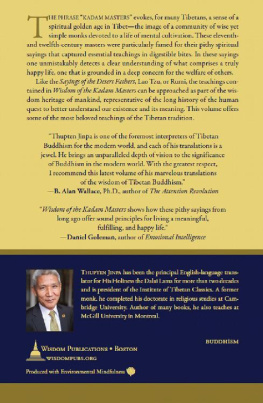
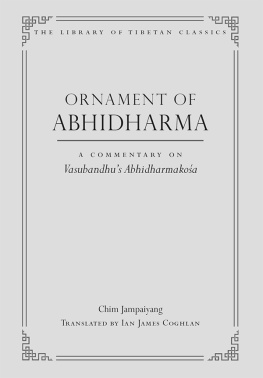
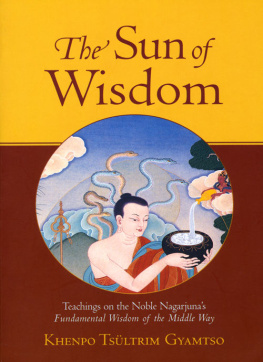
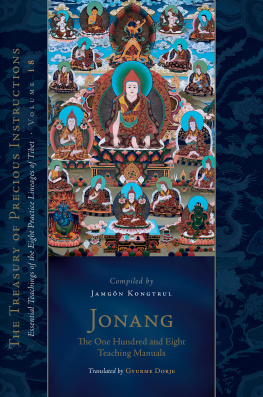

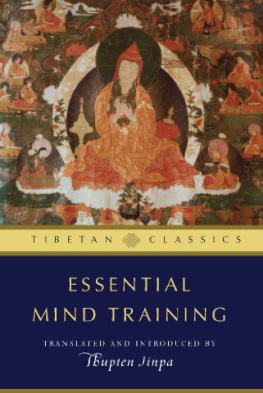
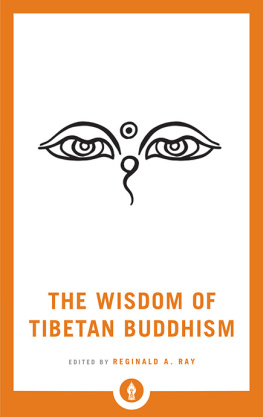
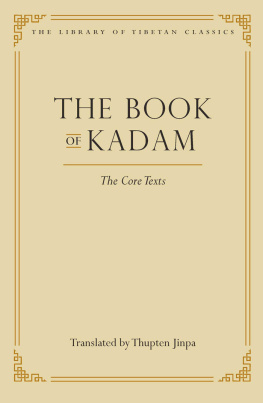
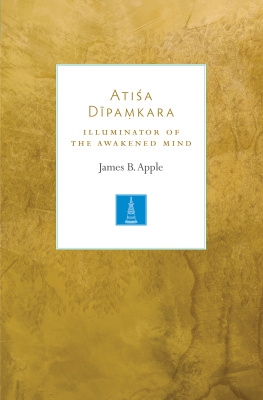
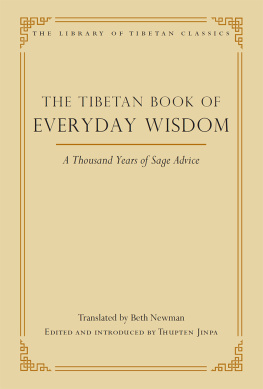
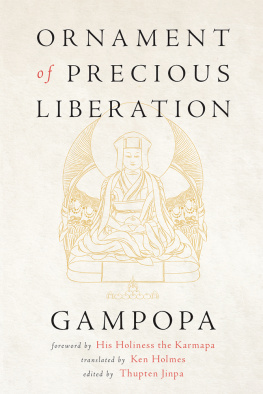
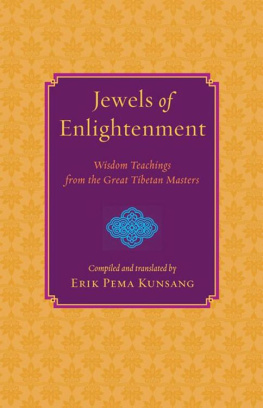
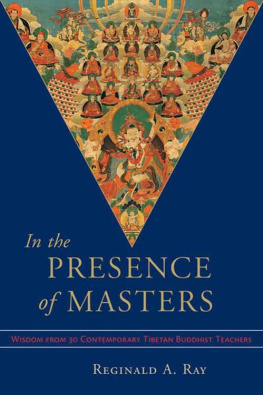

 This book was produced with environmental mindfulness. We have elected to print this title on 30% PCW recycled paper. As a result, we have saved the following resources: 12 trees, 5 million BTUs of energy, 870 lbs. of greenhouse gases, 5,264 gallons of water, and 353 lbs. of solid waste. For more information, please visit our website, www.wisdompubs.org. This paper is also FSC certified. For more information, please visit www.fscus.org.
This book was produced with environmental mindfulness. We have elected to print this title on 30% PCW recycled paper. As a result, we have saved the following resources: 12 trees, 5 million BTUs of energy, 870 lbs. of greenhouse gases, 5,264 gallons of water, and 353 lbs. of solid waste. For more information, please visit our website, www.wisdompubs.org. This paper is also FSC certified. For more information, please visit www.fscus.org.